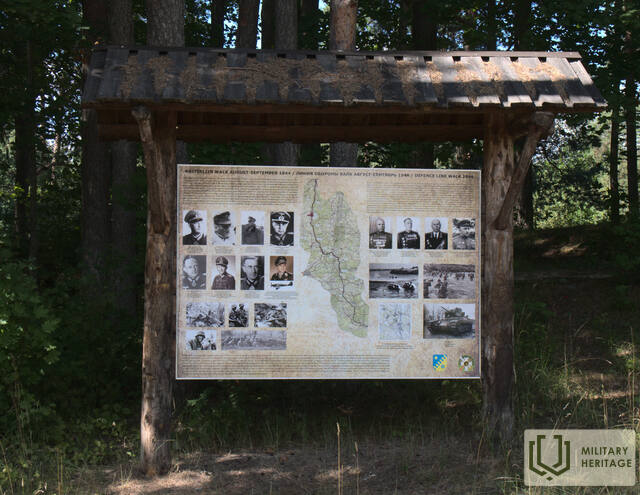Pikasilla battle field Battle site


 206
206


This is a part of the defence line Walk. The Valga defence line (Walk) was built along the Väike Emajõe-Koiva river line in early June 1944. The northern part of the line ended at Lake Võrtsjärv and ran from Pikasilla almost all the way to Ligaste Manor, located on the left bank of Väike Emajõgi. The defence line consisted of two defence belts, occasionally reaching a depth of 10-12 kilometres. The front line was covered with barbed wire and mine fields. All bridges on Väike Emajõgi and Koiva rivers were destroyed (though the Pikasilla and Jõgeveste bridges were only destroyed at noon on 26 August) and all bridges behind the defence line were ready to be destroyed.
The Red Army planned the liquidation of the German and Estonian forces located at the Narva front with an attack via Tartu from their back. To conduct the plan, the Red Army 3rd Baltic Front leadership sent four units to the Emajõgi line. Their task was to cross Emajõgi River and, with a circular movement over the northern bank of Lake Võrtsjärv, occupy Northern Estonia with the German 18th Army located at the Narva front. They also planned to break German resistance on the Pikasilla-Valga line and cut off the German path of retreat towards Riga.
In Southern Estonia, the defence consisted of six divisions and smaller units of Wehrmacht’s XXVIII and XXXVIII Army Corps, with the rear defended by the 207th Reinforcement Division. At the beginning of the operation, the Red Army had a numerical advantage in manpower and battle equipment. The German forces mostly consisted of different battle groups and smaller units. The Omakaitse units participating in the defence were poorly equipped and had low battle morale.
On 27 August, the Red Army managed to cross Väike Emajõgi River at Pikasilla and held a small bridge head there. Until 13 September, the German and Estonian Omakaitse division managed to stop the advancing Red Army units on the defence line Walk. On 14 September, the divisions of the 3rd Red Army Baltic Front began their assault, breaking through the line of defence on 17 September.
Used sources and references:
https://teejuht.esap.ee/eesti-ringreis/louna-eesti-1944/
https://dea.digar.ee/cgi-bin/dea?a=d&d=valgamaalane20160830.2.8.2
http://pikasilla.blogspot.com/p/lahingud-vaikese-emajoe-aares-1944_15.html





